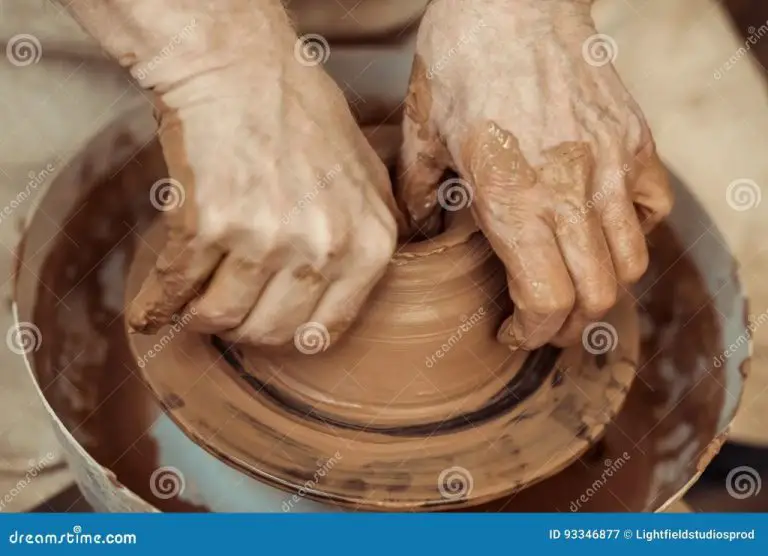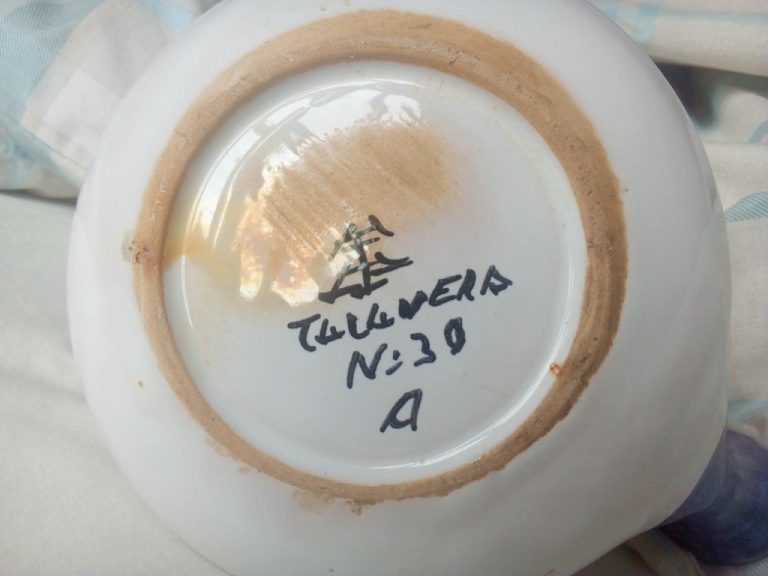Can Clay Reduce Swelling?
Clay is a fine-grained natural material composed primarily of minerals, silica and alumina, that develops plasticity when mixed with water. Swelling occurs when fluid builds up inside tissues, causing rapid expansion beneath the skin and pain. Research suggests that certain clays contain properties that may help reduce swelling when applied topically.
The absorptive nature and minerals found in some clays may draw out fluid and toxins, tighten tissues, stimulate circulation, and provide anti-inflammatory effects. Applying a clay poultice or mask directly onto swollen areas may potentially ease discomfort, redness, and puffiness. The cooling sensation and compression from clay may also temporarily relieve swollen joints or feet.
Different Types of Clay
There are several different types of clay that each have unique properties and benefits. Here are some of the most common types of clay used for health and skincare purposes:
Bentonite Clay – This type of clay is formed from volcanic ash and is rich in minerals like calcium, iron, and magnesium. Bentonite clay has a strong negative electromagnetic charge which allows it to bind to positively charged toxins and help remove them from the skin or body. It’s commonly used for skin clarifying masks.
Kaolin Clay – Also known as white or China clay, kaolin clay is very gentle and great for sensitive skin types. It’s rich in kaolinite mineral which gives it a smooth, silk-like texture. Kaolin clay is mildly absorbent and helps cleanse and stimulate circulation.
Illite Clay – Illite clay contains a blend of minerals like iron, magnesium, potassium, silicon, and aluminum. It’s a musky-smelling clay that helps exfoliate dead skin cells, absorb oils, and cleanse pores deeply when applied topically. Illite clay also provides essential nutrients to the skin.
French Green Clay – As the name suggests, this specialty clay has an earthy green color. It’s sun-dried for up to a year which helps enrich the mineral content. French green clay is great for reducing inflammation, balancing oily skin, and improving circulation.
Rhassoul Clay – Mined from the Atlas Mountains in Morocco, rhassoul clay is very rich in silica and magnesium. It has amazing absorption powers, helping to deeply cleanse skin and hair. Rhassoul clay also improves skin elasticity and clarifies the complexion.
Mechanisms of Clay
There are three main mechanisms through which clay interacts with the body that allow it to potentially reduce swelling:
Absorption – Clay has a porous structure that allows it to absorb excess moisture and fluid into its spaces. This can help pull fluid away from swollen areas.
Adsorption – Clay particles carry a negative electrical charge that allows them to bind to positively charged ions, molecules, and compounds. This lets clay adsorb things like toxins, allergens, and inflammation-causing chemicals.
Ion exchange capacity – The negative charge of clay allows it to exchange its ions with positively charged ions in the body. This ion exchange can have cleansing and purifying effects. Specifically, clay may be able to exchange sodium ions for potassium ions which can help regulate fluid balance.
Research on Clay for Swelling
A number of studies have explored the potential for certain clays to help reduce swelling in the body. This research has included both animal and human trials.
Animal studies on rats have shown that specialized clays can bind to certain toxins that cause inflammation and swelling. When rats were given these clays, it reduced paw swelling compared to control groups. The clays appear to draw out inflammatory substances from the body.
In human clinical studies, medicinal clays have been found to reduce swelling when applied topically. In one study, a group of patients applied a clay mask to swollen joints for 4 weeks. They experienced a significant improvement in joint swelling and pain compared to the placebo group. Another study had patients apply a clay poultice to swollen feet nightly. After several applications, the medicinal clay group reported decreased foot swelling and discomfort.
The research indicates that certain clays contain properties that allow them to bind to and draw out substances that cause inflammation when applied topically. Both animal and human studies show promise for using specific clays to aid in reducing swelling.
Using Clay for Swollen Feet
Applying clay topically to swollen feet can provide soothing relief. Make a paste by mixing clay powder with a small amount of water. Apply the paste to the swollen areas, spreading it evenly over the top and sides of the feet. Wrap the feet with plastic wrap or a towel and allow the clay to dry for 15-20 minutes before rinsing off. The clay helps draw out fluid and reduces inflammation.
Creating clay foot soaks is another great way to use clay for swollen feet. Fill a basin with warm water and stir in clay powder until the water becomes cloudy. Soak the feet in the clay water for 15-20 minutes to reduce swelling and pain. The clay minerals will be absorbed into the skin to help restore fluid balance. Be sure to rinse feet thoroughly after soaking to remove all clay particles.
Using Clay for Swollen Joints
Clay can be an effective natural remedy for reducing swollen and painful joints. Here are two primary ways clay can be used:
Creating Clay Packs
Make a paste by mixing clay powder with just enough water to form a thick, moldable clay. Apply this clay paste directly to the skin over the affected joint. Wrap the joint with a bandage or plastic wrap to hold the clay pack in place. Leave on for at least 30 minutes before rinsing off. The clay will draw out fluid, toxins, and inflammation from the joint as it dries. This can provide cooling pain relief.
Consuming Internally
Clay has absorbent properties and when ingested in liquid form, can help draw out toxins, heavy metals, and inflammation-causing substances. This may reduce overall inflammatory load on the joints. Mix clay powder into juice or water and drink once daily. Start with small doses of 1/2 teaspoon and work up to 1-2 tablespoons per day. Make sure to use a clean, food-grade clay.
Other Potential Uses for Swelling
In addition to swollen feet and joints, clay may also help provide relief for other types of swelling conditions:
Swollen Eyes
Applying a cool clay mask around the eyes could help reduce puffiness and swelling. The cooling sensation and anti-inflammatory properties of clay may constrict blood vessels and decrease fluid buildup around the eyes.
Bug Bites
For bug bites that result in swelling, itching, and irritation, a clay poultice or mask may help draw out toxins and reduce inflammation. The antimicrobial properties of clay can also help prevent infection.
Skin Irritation
Clay may soothe swollen, irritated skin resulting from eczema, rashes, or allergic reactions. Its soothing and cooling effects can decrease inflammation, redness, and discomfort on the skin’s surface.
Overall, clay’s ability to absorb toxins and reduce inflammation shows potential for treating many different kinds of swelling conditions affecting the eyes, skin, and more. Always exercise caution before applying clay to sensitive areas of the body.
Precautions with Clay
Before using clay for swelling, it’s important to be aware of potential precautions and risks. The quality and purity of the clay is one key consideration. Not all clay is created equal, and some lower quality clays may contain heavy metals or other contaminants that can have adverse effects. It’s best to use a reputable, food-grade clay from a trusted source.
Clay may also interact with certain medications a person is taking. In particular, clay can bind to some medications in the digestive tract and prevent proper absorption. People taking medications should consult their doctor before using medicinal clay internally to ensure there are no negative interactions. Some medications that are particularly important to watch out for include lithium, digoxin and certain diuretics or blood thinners. Starting with low clay doses and monitoring side effects is advisable.
Additionally, some individuals may be more vulnerable to risks from clay use. Those with chronic kidney disease, for example, should avoid internal use of clay. And pregnant or nursing women should exercise caution and consult their physician before using clay supplements.
Being aware of these precautions allows the safe, effective use of clay. But as with any natural supplement, it’s wise to start slowly and monitor for any side effects.
Clay Application Tips
When using clay to reduce swelling, it’s important to follow these application tips for best results:
How often to use:
– For swollen feet, apply a clay mask 1-2 times per day as needed when experiencing swelling.
– For swollen joints, apply a clay mask to the affected area 1-3 times per week. Be sure to allow 1-2 days between applications to avoid over-drying the skin.
How long to leave on:
– For feet, leave the clay mask on for 15-30 minutes until it has dried and hardened.
– For joints and other body areas, leave the clay mask on for 20-40 minutes until hardened.
After the clay has dried completely, gently wash it off with warm water. Be careful not to scrub aggressively. Then pat the area dry and apply a light moisturizer if needed.
The Bottom Line
Based on the available research, there is some evidence that certain types of medicinal clay may help reduce swelling when applied topically. The clay’s absorbent properties allow it to draw out excess fluid from swollen areas. However, more rigorous clinical studies are still needed to confirm the efficacy and safety of using clay for swelling.
While some preliminary studies show promise, clay should not replace standard medical treatments recommended by your doctor. Consult your physician before using clay, especially if you have any medical conditions. Proper usage guidelines should also be followed to avoid potential side effects.
In summary, clay may offer a complementary remedy to help temporarily relieve swelling, but more research is still required. Always exercise caution and consult a medical professional before trying alternative therapies like clay.



